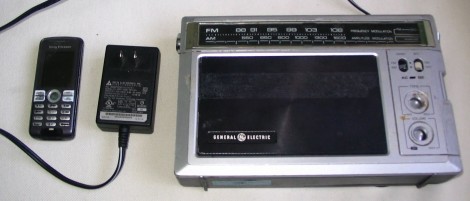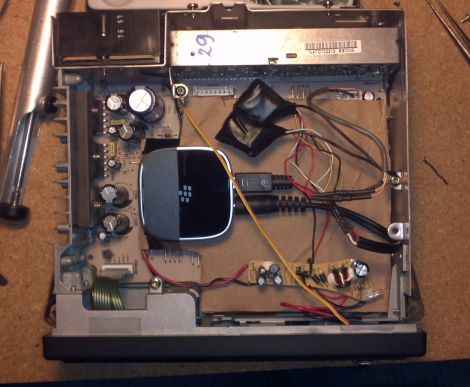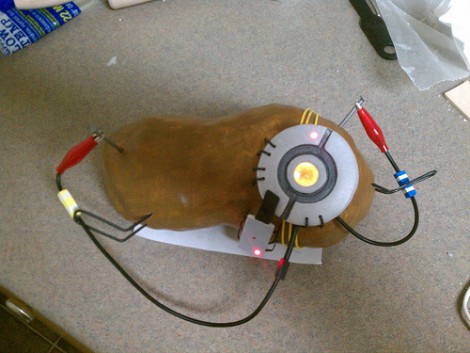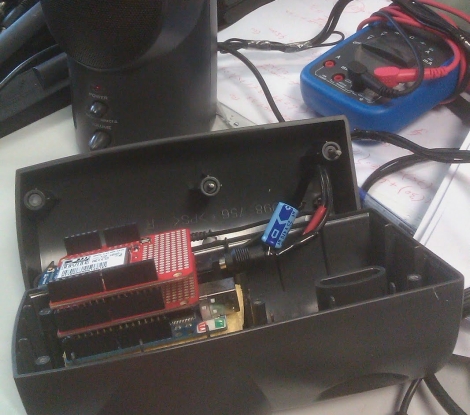
[Autuin] was worried about having desirable electronics stolen while on the road with his band. He didn’t want to take a laptop along on tour, but he didn’t want to be without his music either. To solve this problem, he built a music player inside of a cheap-looking radio. His write-up covers two different portable MP3 solutions, but it’s the second rendition that catches our attention.
After hollowing out the old radio he filled the void with an Asus WL-HDD 2.5. That hardware is meant to be an easy way to add network storage; it houses a laptop hard drive and has WiFi and Ethernet connectivity. But it also has one USB port, and can be hacked to add a second. [Autuin] did just that, using the two USB connections to add a Bluetooth dongle and a USB sound card. Music is synced with the hard drive via some cat-5 cable that’s hidden in the battery compartment of the vintage box. The NAS runs Linux, and the audio playback software is controlled though a Mobile Java application running on a somewhat broken cellphone. That’s an idea that might find its way into our next project.
















